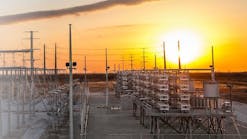Integrating New Waves of Emerging Tech: How Startups Make the Difference
Power, manufacturing, resource extraction — once stalwarts of America’s economy — all lag nimbler, technology-forward peers. In 2018, seven out of the top 10 publicly traded companies came from high technology. As recently as 2011, seven of the top 10 were oil and gas or mining companies, while only two were tech companies.
The transmission and distribution (T&D) industry has not escaped market forces impacting the asset heavy industry. Over the past five years, standard and poor (S&P) utilities generated a 7.4% annualized return, compared with nearly 50% for the broader S&P 500. Since 2007, operating margins have declined by more than 30% across utilities, automotive, energy and industrials. Increasing momentum toward the decentralization and decarbonization of power industry assets has contributed to the declining margins, as have rising operations and maintenance (O&M) costs driven by slow adoption of digital technologies.
At Energize Ventures, we firmly believe that digitization will enable power companies to enhance their financial performance by reducing their costs and optimize their systems. Energize is a Chicago-based venture capital fund partnering with entrepreneurs to digitize energy and industry.
We search for “colliding high growth markets” with applications in asset heavy industries — examples include solar and automation, edge computing and distributed asset management, drones and computer vision. Our investors are a diverse mix of utilities, industrial companies, independent power producers (IPPs), institutional investors, and family offices. We have identified and invested in several themes transforming the power sector.
Grid modernization investment is beginning to broadly digitize T&D systems. As more grid operating data becomes available and is combined with other novel data sources (satellite, LiDAR, weather, and so forth), utilities are searching for ways to “close the loop” by turning data into insights and action.
T&D artificial intelligence and machine learning use cases exist today. Our portfolio company Jupiter Intelligence, a climate risk analytics platform, is providing a leading East Coast utility with more granular temperature data across their service territory to better evaluate transformer health and eventually, forecast electricity demand.
As the power grid becomes increasingly digitized, the risk of cyber intrusions will only rise — especially for operational technology (OT) that historically had limited network connectivity. In fact, many utility operators do not have a full account of network connected devices to their systems, and even less visibility of the network traffic streaming between those devices.
Nozomi Networks is building a leading platform to visualize and monitor industrial control systems (ICS) in order to identify, predict, and protect OT assets from malicious activity. Currently, Nozomi is protecting hydro facilities, wind farms, and T&D grids globally.
The aging utility workforce and automation replacing human workers are hot button issues for many utilities and their regulators. What is the right balance between preserving institutional knowledge and replacing workers with automation? Our perspective is that “enabling” workers by automating low-value tasks can help strike a balance between automation and knowledge management in the immediate term. Inspection activities — manual data collection, processing and analysis — are ripe for disruption.
DroneDeploy offers a drone software platform to automate asset and land inspection, surveying, and mapping. DroneDeploy’s software can even automate drone flight plans and post-collection image processing, generating actionable business insights. Currently, DroneDeploy is working with an IPP to evaluate potential solar photovoltaic (PV) development locations without requiring a manual walkthrough saving both time and money. DroneDeploy is also beginning to support T&D applications for vegetation management or asset inspection.
Distributed energy resources (DERs) adoption — solar, demand-side flexibility, storage, electric vehicles (EVs) — is rapidly growing, creating challenges for utilities to process interconnection requests and mitigate distribution grid impacts. DER also presents an opportunity to better serve utility customers and act as a resource to the T&D network and bulk electricity system. Some estimates suggest total U.S. DER capacity today ranges from 60 to 100 GW, but most of the capacity has not been made available as a resource by customers or is not currently dispatchable. Platforms that connect customers, DER providers, and utilities can unlock the potential of a decentralizing electricity system.
As utilities increasingly offer DER to customers, a question often arises — which customers are best suited for DER, while minimizing grid impact? Aurora Solar remotely evaluates a building or home for solar. In minutes Aurora’s solution creates an accurate report detailing the size, cost, savings and production. Their software creates a system design, evaluates project economics based on customer load profiles and local financial incentives, and prepares permit-ready engineering diagrams to simplify the preinstallation process. Aurora is further enhancing the platform to evaluate battery storage with solar. Utilities can partner with Aurora to identify the optimal solar customers on distribution circuits with the most DER hosting capacity, without ever having to roll a truck.
Transportation electrification’s first wave entailed original equipment manufacturers (OEMs) to release EVs following the success of Tesla and build a baseline network of charging infrastructure. The EV market is transitioning beyond initial adopters (less than 5% annual sales) to an early majority (more than 10 to 20% annual sales). Further accelerating EV adoption will require a new wave of innovation, such as novel EV ownership models and transport options, new charging methods minimizing the impact of charging on the grid, and software platforms to manage fleet applications.
Volta Charging offers the largest free EV network in the United States by locating EV stations in high traffic areas and advertising on the EV charger to cover the cost of station capital expenditure (CapEx) and electricity. Significantly, for T&D utilities seeking EV charging investment, Volta’s network has extremely high utilization, reducing the risk of stranded assets for power companies.
As older industries transition to a more digital and connected world the utility industry is ripe for disruption. There is a significant amount of change going on right now. We think new companies and technologies will play an important role in helping older industries become more efficient and adjust to their changing environment.


